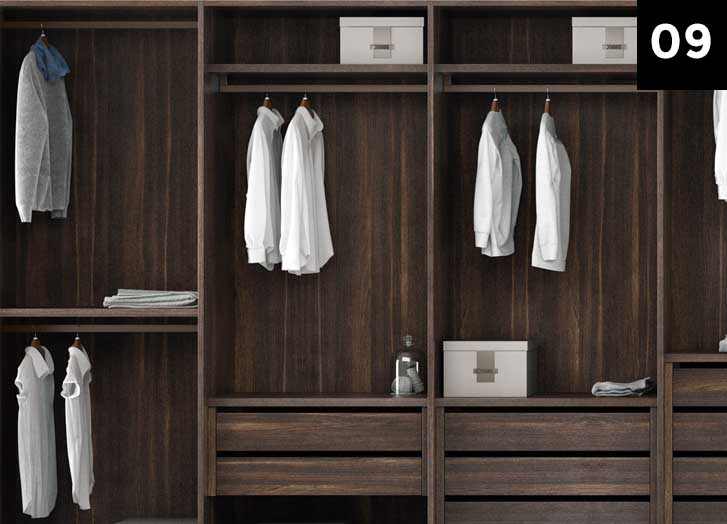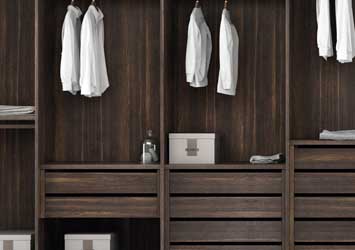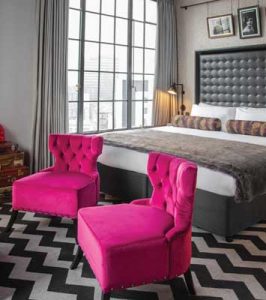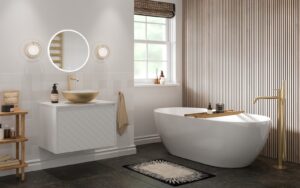GTHD
A GUIDE TO HOTEL DESIGN PT 9:
THE WARDROBE
Do you remember wardrobes from childhood? Hiding places in games, smelling of moth balls or camphor. Sometimes they are a fitted part of the building fabric, sometimes a great big lump of furniture, usually lined with cedar, the timber with a reputation of keeping clothes sweet smelling and deterring moths.

Credit: Go Modern Jesse Maxisquare
They still have a place in hotel bedrooms, and range from the token skinny hanging rail in a Travelodge to walk in ‘dressing rooms’ in the major five star hotels such as One & Only.
The primary purpose of a wardrobe is to hold the clothes of the guest. If you are a large function hotel then ball gowns and tuxedo’s may be the main occupants – and they set the parameters. So the hanging rail height from the floor of a robe is generally accepted as 1660mm (about 5 ft 6 inches), the length of a ball gown. Obviously the guest needs to be able to put hangars on this so the height of the rail above floor level also need to be carefully factored in to the design.
Above this rail was traditionally the shelf for hats, and it may be that the ‘robe was vertically split to allow shelves to be put down one side for other folded garments, or split into two hanging areas either as his’n’her areas, or wet and dry areas if no room hooks are provided (see Pt 8 With Drawer ).
Hotel hangers are often captive type, where the ‘hook’ part is kept on the rail. Generally hated by guests who find them fiddly to use and impossible to use to hang items up to dry on the shower rails, captive hangers prevent theft. Often hangers are provided in turn with padding for delicate garments or a rail for trousers to hang over.





